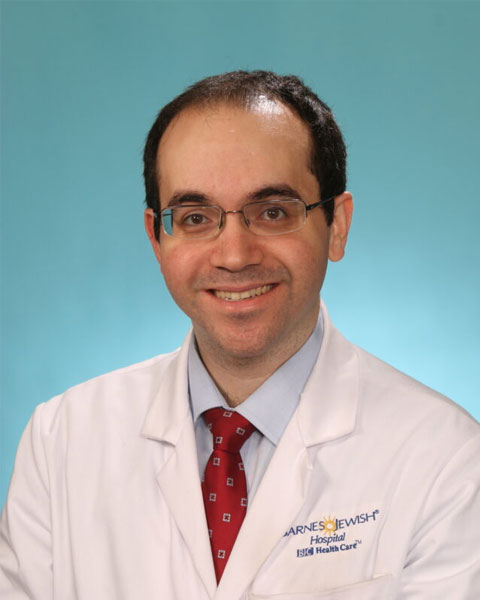Back
Poster Session D
Immunobiology
Session: (1681–1706) Innate Immunity Poster: Basic and Translational Science
1704: Interaction of Macrophages and Natural Killer Cells in Pathogenesis of HIV-1-Associated Inflammatory Arthritis
Monday, November 14, 2022
1:00 PM – 3:00 PM Eastern Time
Location: Virtual Poster Hall

Can Sungur, MD, PhD
Washington University
St. Louis, MO, United States
Abstract Poster Presenter(s)
Can Sungur1, Gao Hongbo1, Li-ping Yang2, Liang Shan1 and Wayne Yokoyama3, 1Washington University, St. Louis, MO, 2Washington University in St. Louis, St. Louis, MO, 3Washington University School of Medicine, St. Louis, MO
Background/Purpose: Human immunodeficiency virus (HIV) remains a significant life-threatening agent and burden on public health. Lesser studied and understood aspects of HIV infections include HIV-associated inflammatory arthritis and the role of HIV-infected macrophages. By utilizing humanized mice with human cytokine knock-ins that better support a human immune system than other models, we studied HIV-associated arthritis to illustrate a unique interaction of HIV-infected macrophages and natural killer (NK) cells that contribute to the development of arthritis and tenosynovitis.
Methods: MISTRG-IL15 mice (human M-CSF/GM-CSF, IL-3, SIRPα, TPO, RAG2 -/-, IL2rg-/-, and IL-15 knocked into their respective endogenous mouse loci) were reconstituted with CD34+ hematopoietic stem cells obtained from human fetal cord blood. After checking for engraftment after 6-8 weeks, we infected reconstituted mice with HIV-1. Synovial tissues were obtained from the knee joints of the hind limbs at different time points and processed into single cell suspensions for flow cytometry. Intracellular staining was also performed on cells incubated with PMA/Ionomycin for 4 hours and then permeabilized and fixed for flow cytometry. Histochemistry was also performed on hind paws that were fixed in 4% paraformaldehyde. Samples were then sectioned and stained with H&E for histologic analysis. Studies utilizing monoclonal antibodies to deplete NK cells and block GM-CSF were also performed.
Results: Humanized MISTRG-IL15 mice developed inflammatory arthritis after HIV-1 infection. Significant increases in total inflammatory cells and specifically NK cells and macrophages were seen in the synovial tissue throughout the course of infection. GM-CSF-producing NK cells increased throughout the course of HIV-1 infection. Late in the course of infection, IFNγ- and granzyme B-producing NK cells increased, along with a pro-inflammatory environment in the synovial tissue. The majority of HIV-infected cells were macrophages and not CD4 T cells in the synovial tissue. Histologic analysis showed increased cellular infiltrate in the synovium and tendons of mice infected by HIV with pannus formation. Antiretroviral therapy eliminated cellular infiltration while cessation of therapy resulted in return of cellular infiltration in synovial tissue. Infection with a chemokine receptor-tropic HIV virus that does not infect macrophages (X4-tropic) showed reduced pro-inflammatory cytokine production by NK cells, strongly suggesting HIV-infected macrophages induced the NK cell changes. Depletion of NK cells as well as antiretroviral therapies resulted in reduced inflammatory arthritis changes.
Conclusion: We have developed a unique humanized mouse model of HIV infection allowing opportunities to study HIV-associated arthritis in depth. The interplay of HIV-infected macrophages with GM-CSF-producing NK cells contributes to the development and progression of HIV-associated arthritis. These findings will provide mechanistic understanding of inflammatory arthritis and tenosynovitis in various arthridities beyond HIV-associated arthritis.
Disclosures: C. Sungur, None; G. Hongbo, None; L. Yang, None; L. Shan, None; W. Yokoyama, None.
Background/Purpose: Human immunodeficiency virus (HIV) remains a significant life-threatening agent and burden on public health. Lesser studied and understood aspects of HIV infections include HIV-associated inflammatory arthritis and the role of HIV-infected macrophages. By utilizing humanized mice with human cytokine knock-ins that better support a human immune system than other models, we studied HIV-associated arthritis to illustrate a unique interaction of HIV-infected macrophages and natural killer (NK) cells that contribute to the development of arthritis and tenosynovitis.
Methods: MISTRG-IL15 mice (human M-CSF/GM-CSF, IL-3, SIRPα, TPO, RAG2 -/-, IL2rg-/-, and IL-15 knocked into their respective endogenous mouse loci) were reconstituted with CD34+ hematopoietic stem cells obtained from human fetal cord blood. After checking for engraftment after 6-8 weeks, we infected reconstituted mice with HIV-1. Synovial tissues were obtained from the knee joints of the hind limbs at different time points and processed into single cell suspensions for flow cytometry. Intracellular staining was also performed on cells incubated with PMA/Ionomycin for 4 hours and then permeabilized and fixed for flow cytometry. Histochemistry was also performed on hind paws that were fixed in 4% paraformaldehyde. Samples were then sectioned and stained with H&E for histologic analysis. Studies utilizing monoclonal antibodies to deplete NK cells and block GM-CSF were also performed.
Results: Humanized MISTRG-IL15 mice developed inflammatory arthritis after HIV-1 infection. Significant increases in total inflammatory cells and specifically NK cells and macrophages were seen in the synovial tissue throughout the course of infection. GM-CSF-producing NK cells increased throughout the course of HIV-1 infection. Late in the course of infection, IFNγ- and granzyme B-producing NK cells increased, along with a pro-inflammatory environment in the synovial tissue. The majority of HIV-infected cells were macrophages and not CD4 T cells in the synovial tissue. Histologic analysis showed increased cellular infiltrate in the synovium and tendons of mice infected by HIV with pannus formation. Antiretroviral therapy eliminated cellular infiltration while cessation of therapy resulted in return of cellular infiltration in synovial tissue. Infection with a chemokine receptor-tropic HIV virus that does not infect macrophages (X4-tropic) showed reduced pro-inflammatory cytokine production by NK cells, strongly suggesting HIV-infected macrophages induced the NK cell changes. Depletion of NK cells as well as antiretroviral therapies resulted in reduced inflammatory arthritis changes.
Conclusion: We have developed a unique humanized mouse model of HIV infection allowing opportunities to study HIV-associated arthritis in depth. The interplay of HIV-infected macrophages with GM-CSF-producing NK cells contributes to the development and progression of HIV-associated arthritis. These findings will provide mechanistic understanding of inflammatory arthritis and tenosynovitis in various arthridities beyond HIV-associated arthritis.
Disclosures: C. Sungur, None; G. Hongbo, None; L. Yang, None; L. Shan, None; W. Yokoyama, None.

